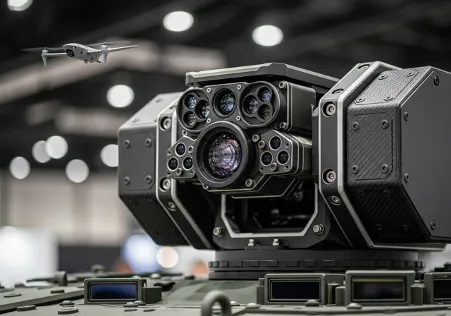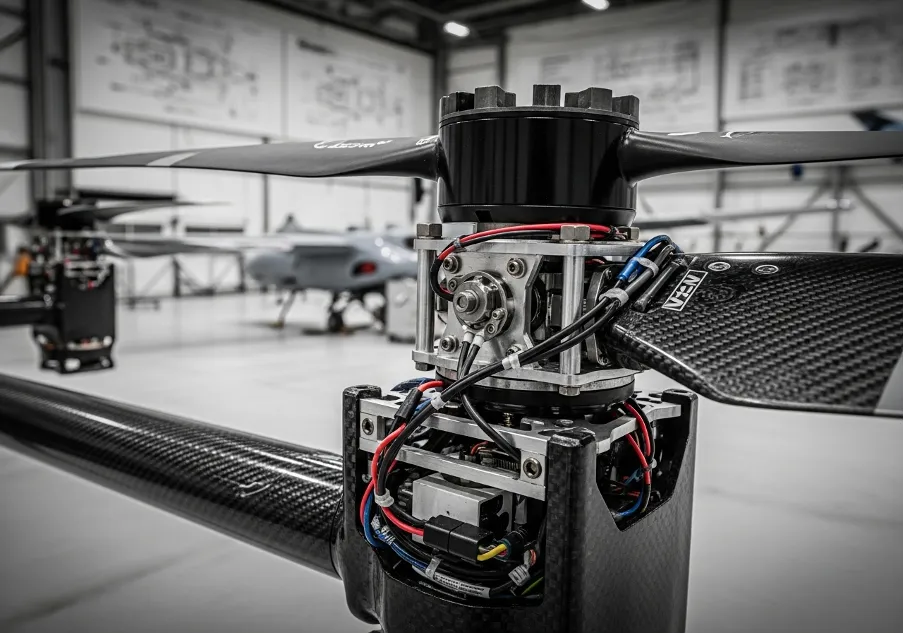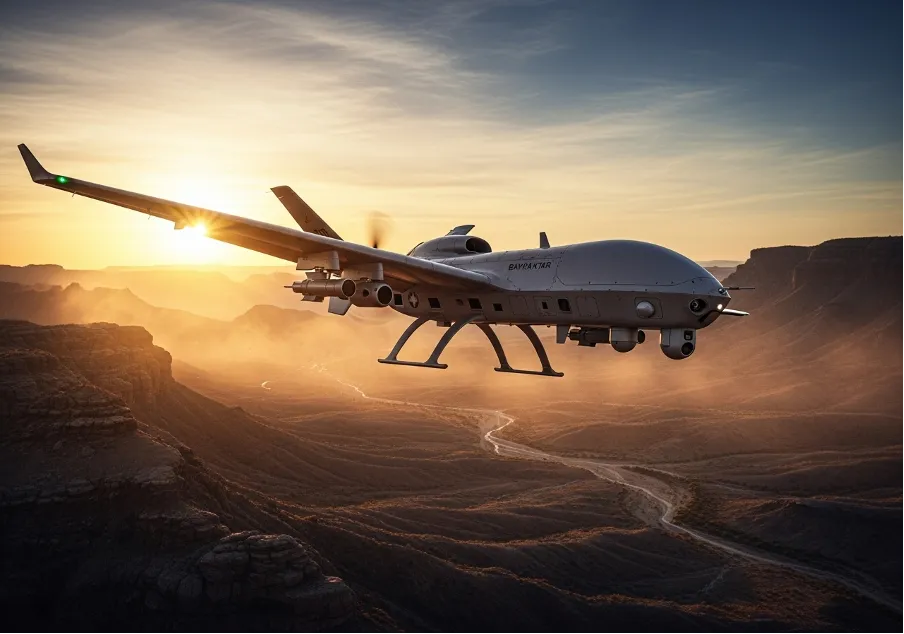
The Modern Anti Drone Gun
The proliferation of unmanned aerial vehicles (UAVs) has moved beyond hobbyist circles and into commercial and, critically, military domains. Their effectiveness as tools for reconnaissance and attack means that developing countermeasures is no longer a niche concern but a strategic necessity. The conversation around this technology often involves a specialized drone jammer designed to disrupt the control signals that are the lifeblood of any remotely operated vehicle. These systems form the first line of a complex defense network.
As drone technology becomes more autonomous and resilient, the methods to counter it must also evolve. Simple line-of-sight interruption is insufficient against UAVs that can operate on pre-programmed flight paths or switch frequencies dynamically. This has spurred the development of a diverse range of counter-UAS (C-UAS) tools, from sophisticated electronic warfare platforms to more direct kinetic solutions. A well-equipped security force might use a portable anti drone gun to protect a specific location or event, showcasing the need for layered and adaptable defense strategies against a constantly changing aerial threat.
1. Radio Frequency (RF) Jamming: The Electronic Disruption
The most prevalent form of counter-drone technology is arguably Radio Frequency (RF) jamming. The core principle is straightforward: overwhelm the drone’s receivers with noise. By broadcasting a powerful signal on the same frequencies the drone uses for communication and navigation—typically the 2.4 GHz and 5.8 GHz bands for control, and GNSS frequencies for positioning—the jammer severs the link between the UAV and its operator. The targeted use of a drone jammer gun allows an operator to aim this disruptive energy with some precision. This electronic severing of control forces the drone to enact its failsafe protocol.
The outcome of a successful jamming operation depends entirely on the drone's programming. Most commercial drones are designed with safety in mind and will initiate one of several pre-set maneuvers:
- Return-to-Home (RTH). The drone will attempt to ascend to a safe altitude and fly back to its last known home point.
- Automatic Landing. The UAV will immediately begin a controlled descent and land on the spot.
- Hover in Place. The drone freezes its position, awaiting re-establishment of the control link, which is unlikely while jamming is active.
In any of these scenarios, the immediate threat is neutralized without physical destruction. Understanding the operational principles of a drone signal jammer is therefore fundamental for anyone involved in securing airspace, as it represents the most common tool for non-destructive interdiction. The process of drone signal jamming is a delicate balance of power and precision, aiming to disable without causing unintended collateral damage. When people talk about a drone gun, they are very often referring to these directional jamming devices. The entire field of drone jamming continues to grow in complexity as drones themselves become more frequency-agile.
2. GPS Spoofing: Deception Instead of Denial
A more subtle form of electronic warfare than brute-force jamming is GPS spoofing. Instead of simply blocking satellite navigation signals, a spoofer broadcasts false, but seemingly authentic, GPS data to the drone’s receiver. This tricks the UAV into miscalculating its actual position. Unlike the overt disruption caused by many anti drone guns, spoofing is a covert manipulation. The drone doesn't know it's being interfered with; it simply thinks it's somewhere it isn't.
The strategic advantage here is significant. An operator could potentially redirect a drone to a safe capture location or lead it away from a sensitive target without the pilot ever realizing their control has been compromised until it's too late. A comprehensive drone jammer system will often incorporate both jamming and spoofing capabilities, allowing the user to choose the most appropriate response based on the threat level and rules of engagement.
3. Kinetic Solutions: The Hard-Kill Approach
When electronic countermeasures are insufficient or inappropriate, kinetic solutions come into play. This category encompasses any method that physically intercepts and disables the drone. These are the "hard-kill" options, ranging from low-tech nets to high-tech guided missiles. Some of the most effective handheld systems, which some might call a pistola tumba drones in less formal settings, are designed for rapid, targeted response against single threats. The goal is neutralization through direct impact.
The variety within kinetic countermeasures is broad, and the choice often depends on the operational environment and the risk of collateral damage. A few prominent examples include:
- Net Guns. Devices that fire a net, often weighted at the corners, to entangle the drone's propellers, causing it to lose lift and fall.
- Specially Designed Projectiles. Ammunition designed to disable a drone with minimal fragmentation, reducing risks to persons or property on the ground.
- Interceptor Drones. Larger, more robust drones designed to physically engage and disable smaller UAVs, either by ramming them or using their own onboard capture mechanisms.
This category of anti-drone gun represents a direct and unambiguous method of disabling a threat. The development of a more advanced anti drone weapon is a constant process, aiming to increase accuracy and minimize the risk of misses. Ultimately, any effective kinetic drone disruptor must be precise enough to hit a small, fast-moving target reliably.
4. Directed Energy Weapons (DEW): Lasers and Microwaves
Directed Energy Weapons represent a significant leap in C-UAS capability. These systems use focused energy—either high-energy lasers (HEL) or high-power microwaves (HPM)—to disable or destroy drones at the speed of light. Lasers work by focusing intense heat on a critical component, such as a rotor, a camera, or the drone's fuselage, causing structural failure or burning out its electronics. This is far more precise than a conventional drone jamming gun could ever be.
High-power microwaves, on the other hand, function more like a targeted electromagnetic pulse (EMP). They emit a wide beam of energy that overloads and fries the drone's internal circuits without needing to physically burn through the outer shell. An effective drone frequency jammer operating on microwave principles can disrupt or destroy multiple drones in a swarm simultaneously. These systems are often what is meant when discussing a next-generation military drone jammer. Some handheld prototypes of these devices are even described as an emp drone gun, capable of disabling a drone with an invisible pulse of energy.
5. Protocol Takeover: The Cyber Warfare Method
Perhaps the most sophisticated anti-drone method is the cyber or protocol takeover. Rather than jamming the signal or physically destroying the drone, this technique involves hacking it. Specialists exploit vulnerabilities in the drone’s communication protocol to hijack the control link. If successful, the C-UAS operator can gain full control of the drone—allowing them to land it, return it to its origin point, or even access its video feed and data. This is the pinnacle of what advanced anti drone weapons can achieve.
This method requires deep technical intelligence about the target drone’s systems and is far more complex than deploying a standard jammer. However, it offers the greatest potential for intelligence gathering and minimizing damage. An effective anti drone system built around this principle can capture a drone, analyze its payload and flight data, and help identify its operator. The approach moves beyond simple interference to a level where understanding how do drone jammers work is merely the first step toward a much deeper form of electronic engagement.
Trusted Worldwide
Operating in more than 50 countries, we provide cutting-edge defense solutions that ensure your safety to every corner of the globe.
Get Advice From Our Experts
Please complete the feedback form to gain exclusive access to our catalog showcasing models that are not available on our website
We’re here to assist you with any inquiries, support, or information you need. Whether you're interested in our defense products, looking to collaborate, or simply have a question, our team is ready to help.






































